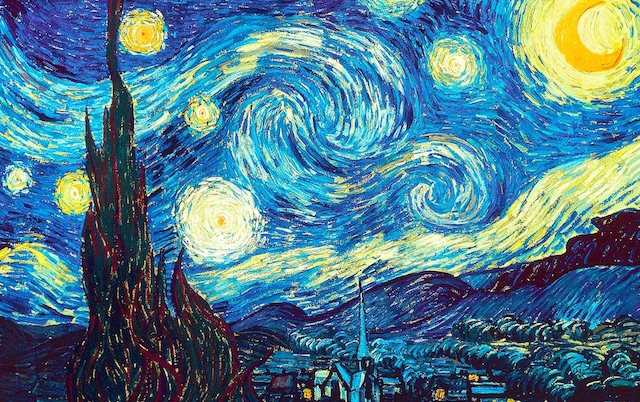The definition of art varies for each person.
Some define it as the way streaks of red and orange light criss-cross the setting sky, others define art as a person, a place, a thing. A three letter word that seems so simple at the surface, is exceedingly difficult to understand, to define. One’s quest to define this simple word is like attempting to catch water with your useless hands—it runs from us, ever changing and always distant. What was once considered worthless and futile can now be considered groundbreaking and magnificent.
But how has the ever changing definition of art impacted the lives of the now famed artists we know best? How would the lives of many of these artists have changed had they known the extent to which their art would be later valued? What makes a piece of work, art?
The masterpieces of others decorate our world, our minds. They influence the way we think, how we act, how we hold ourselves within this vast expanse of people and ideas that make up our current society. Yet so rarely do we stop and think about what criteria we use to define something as art.
What makes Van Gogh’s Starry Night, or Da Vinci’s Mona Lisa so revered within our current society? Why is Fitzgerald’s The Great Gatsby considered one of the greatest works of fiction ever written? Within this elite circle of some of the most recognizable works of art in history, there seems to be a very common denominator.
Tragedy. Poverty. Sickness. Despair.
While The Great Gatsby is so widely known and appreciated at present, few realize that the first year it was published it sold a mere 20,000 copies, leaving Fitzgerald impoverished most of his life and dying believing himself to be a failure and his work forgotten. And Edgar Allan Poe, one of the first well known American writers to earn a living through writing alone lost both his foster mother and first wife to tuberculosis, spending a large portion of his life penniless and in debt.
Beethoven’s magnificent symphonies are renowned across the globe, his loss of hearing widely known, yet this did not prevent him from composing some of the most revered works in all of human history. It is said that at the premiere of one of his symphonies in 1908 he had to be turned around to witness the thunderous applause as his sense of hearing had so deteriorated he could not hear the cries from the audience or the swelling to crescendos of the orchestra.
Many more of the artists we look up to today also suffered great misfortune and tragedy, the lines blurring between the their daily lives and how they expressed themselves within their art form.
As Vincent Van Gogh put it, “I have put my heart and my soul into my work, and have lost my mind in the process.” Yet it was not just him—many suffered for their art. Or did they? A question now arises as to whether these artists suffered for their art, or if their magnificent creations were a direct result of their suffering? Without this suffering, this despair, would these artists still have made the same works that are so revered within our current society?
I watched a short clip recently from an episode of Dr. Who that dealt with some of these themes. The clip features Van Gogh witnessing how his works have impacted our current day society, He is breath taken, utterly shocked that the works he valued so little are now so greatly admired and respected. There is a line that speaks to me from this video that I believe is now worth bringing up.
When an art historian is asked how Van Gogh rates in the history of art, he replies that “he transformed the pain of his tormented life into ecstatic beauty. Pain is easy to portray, but to use your passion and pain to portray the ecstatic and joy and magnificence of our world…that is something else.”
Breathe for a moment and take that in. What does that mean?
When I take all of this information in, how many of these artists lived, how we have defined art over the years, I can begin to understand that art does not simply equate to beauty. Art is also pain. It’s not just the warm, but it’s also the cold and everything in between. Art without pain is like day without the night. You cannot appreciate one without the other, because truthfully what is life without pain, and what is art without experience?
Though we may not all not all recognize it, we are all artists without our own right. Even if our definition of art may all be different. Our life is a large white canvas and the experiences we use to decorate it is our paint. With the good and the bad, we create a mural of the warm and the cold, the absurd and the magnificent. With each new experience comes another brush stroke, and with each new idea or adventure comes the cautious sketch mark of something different and original.
I look around my room and see the how masterpieces of others decorate my walls, my bookshelves, my mind. A Van Gogh pinned to one wall, the masterpieces of J.K. Rowling and Fitzgerald lining my bookshelves, the teachings of Aristotle and Alan Watts constantly on my mind.
While we are so aware of the masterpieces of those that came before us, we must not discount the art that each one of us is creating within our own lives.
Author: Sophia DeBruin
Editor: Catherine Monkman
Photo: Wikimedia Commons (Public Domain)











Read 0 comments and reply